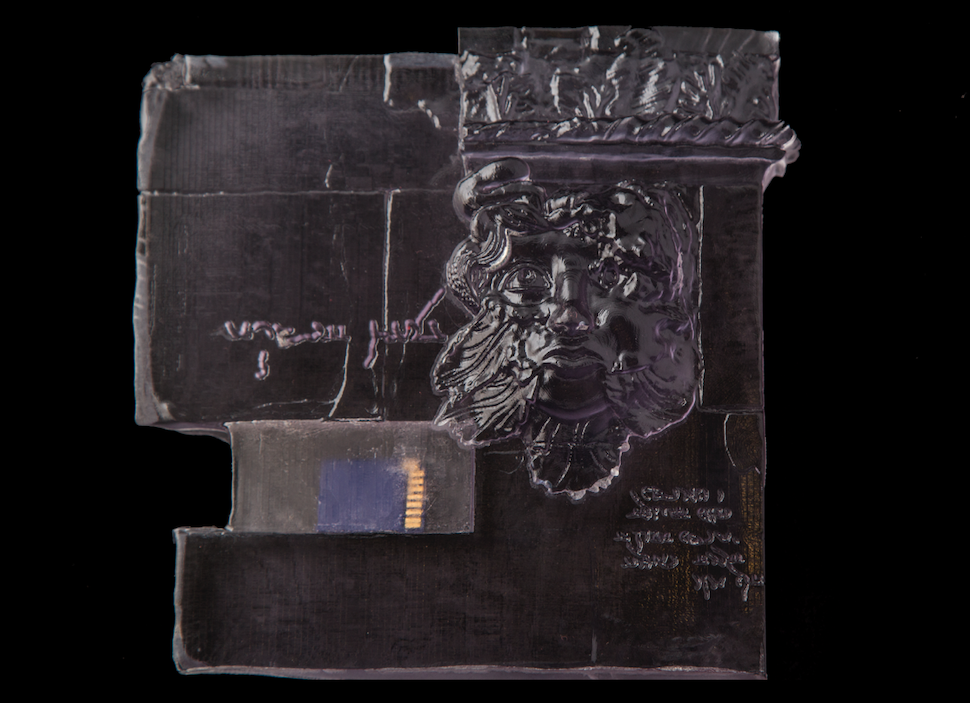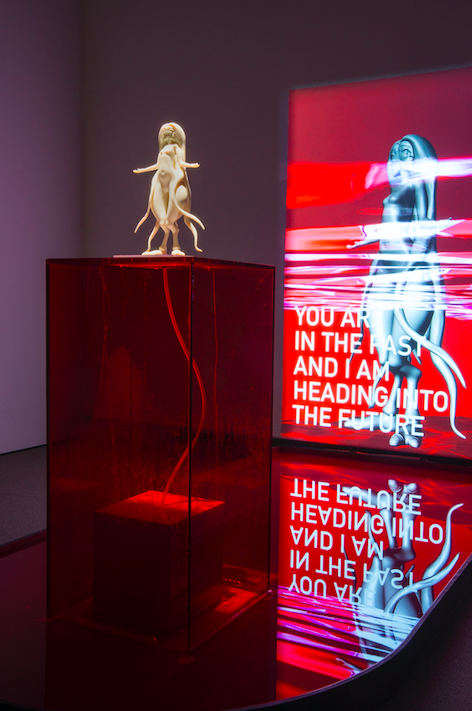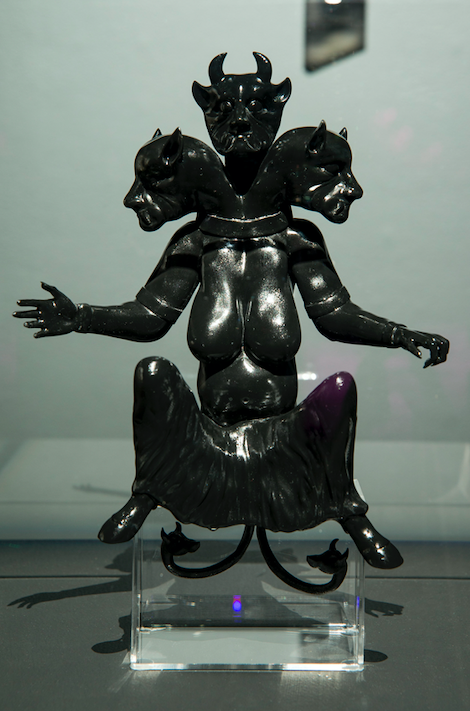The following piece was written by Saba Askary, an Amsterdam-based researcher and curator in the field of Art History and, with it, concepts of changing our past and future through new interpretations. She is currently managing the development of Unseen Media – an online photography platform and print magazine focusing on the new and emerging.
Pixelated
The following article is the second of a series titled, “Pixelated” by Saba Askary. While spaces dedicated to the medium pop-up and museums actively collect it, ‘digital art’ is still considered a non-art to most. Evolving from the multimedia and computer print art of the 70s, its barebone definition is any practice using recent technology in its creative process and the web in its circulation. Today, Creative Coding and Gif Art are only some of the many sub-genres in this silently engulfing movement. But the break away from physicality, white walls, dealers and priceless auras lead many to suspicion. Where’s the indicator of value? When is it art and when is it content?
What we can be sure of is this. New technology invariably changes art. In the mid-19th century French ‘plein-air’ painters ventured outside their dark studios holding recently-invented, transportable tubed oil paints. In the fresh open air they decided to focus their paintbrushes on light instead of shadows – this small shift in perspective lead us to Impressionism and Modern Art in its wake. More recently, through web dissemination, fine-art photography has proliferated across the art world with its accessibility and relatability – a precursor to the digital. For better or worse, the more permeating medium ultimately wins over history, and what’s more enveloping than the rise of our digital consciousness?
For the moment, though, ‘digital art’ continues to live as non-art, where categorization is murky and experimentation is rife. When an artist is considered a ‘digital’ artist is not clear at all, including to themselves. This is the first in a series of posts looking into the practices of those who may be termed ‘digital artists’ stemming from the Ajam region, and who use it to look back home; critically, nostalgically or surrealistically. Though few and far in between, these artists confirm the democratising effects of the art form. Not only through its potential for viral circulation, but in its uncanny ability to empathise with a wider group: to everyone experiencing the whirlwind of the 21st century.

***
Each year, the founding editor of Wired Magazine, Kevin Kelly, returns to the 25-year-old publication to write one cover article. This past March 2019 he introduced readers to the concept of the mirrorworld.
“The mirrorworld doesn’t yet fully exist, but it is coming. Someday soon, every place and thing in the real world – every street, lamppost, building, and room – will have its full-size digital twin in the mirrorworld” Kelly writes. He’s referring to technologies that fervently map our reality through an overlay of data, using the millions of cameras at our disposal. This article looks at the enormous potential and even greater perils of such technology as we transition into a new era, told through the works of activistic artist Morehshin Allahyari.
Unlike virtual reality, mirrorworlds emerge through advancements in augmented reality (AR). Pokemon Go utilised real-time geography to capture creatures visible only through the game, and is an example of this layering. We know AR is on the rise – major investments have been funnelled into smart glasses developed by companies like Huawei, while Microsoft’s HoloLens, an AR powered visor mounted on a head strap, is being acquired in huge numbers by the US military and deployed in factories and production warehouses worldwide. AR in everyday life isn’t far behind.
It’s a new era of discovery, but instead of casting off through unfamiliar seas to map new land; we’re on a journey towards mapping Earth’s new digital twin. And as with every age of discovery, those in possession of power will attempt to control the narratives of that which becomes discovered, or in this case, scanned in.

Scanning in Heritage
Take, for example, Syria’s 1,800 year-old Roman Arch of Triumph in Palmyra. Rigged with dynamite and blown-up by ISIL in 2015, it was the first large-scale monument of its kind to be 3D modelled using thousands of tourist photos and finally resurrected as a 3D print, then displayed proudly across powerful centres like London and New York, now in Geneva. This came after a flurry of interest by politicians from Russia, the UK, Italy and private multinational tech companies. To these groups, technology opened the door to conserving World heritage even after its physical destruction.
And though it is a worthy cause – in the hands of politicians it becomes a tool to emphasise specific narratives inherent in such monuments, in this case – a statement on Western dominance. The UK’s Boris Johnson proudly stated that the act of digitally recreating the Arch was in ‘defiance of the Barbarians that destroyed the original’.
The original purpose of the Arch from circa 200AD was to commemorate Roman dominance over the Parthians, the strongest threat to them in the East. The arch was and is a pertinent symbol of Western dominance over Eastern territory – and though the 3D prints will wither with time, the 3D scanned model, backed up by political power, will live forever in the forming mirrorworld.
Morehshin Allahyari and the Threat of Digital Colonialism
While the media was awash with praise for the 3D reconstruction of the Arch in 2015, Iranian born and raised artist Morehshin Allahyari watched on with unease from her NYC studio. Allahyari felt the media’s story perpetuated a saviour complex that not long ago justified colonialism and the ownership of Other cultures by the West. By destroying the physical monument, ISIL left a gaping hole in the story of Roman expansion, which by 2015 had become little more than a popular tourist attraction to Syrians.
In the place of this absence, Western Nations used technology to fill that hole – and in it place set a precedent on what World heritage is worth conserving through new technology, and who gets to make that decision under justification of a supposed ‘shared’ history. Western expansion continues, once on land, now online. In light of all this, Morehshin Allahyari coined the term Digital Colonialism.
Allahyari’s practice seems to come from a future where the mirrorworld is already here. She employs tools such as 3D scanning, 3D modelling and 3D printing, video, poetry and performance – but at its core, the artist is mainly concerned with political and social activism. In 2016 she received widespread acclaim for her project Material Speculation: ISIS, wherein she 3D modelled and printed 12 ancient artefacts destroyed by the terror group during a raid at the Mosul Museum of Iraq.
Her project differed from the Arch of Palmyra reconstruction in two ways: firstly, each object was 3D printed with an embedded flash drive at its core, holding documented research into the respective artefact. Secondly, the project made a point of having the 3D printing files freely available online. To Allahyari, “to download, share, and print these files is to participate in an additive act of resistance.” The more people held factual data on these objects, the less they could be warped and misrepresented in the future.
Furthermore her project explored the poetic relationships between the material of 3D printing – plastic, and its powerful parent – oil; linking to terrorism, technocapitalism and the degradation of our environment, all seen on the rise.
It’s fair to say Allahyari conceives her work on multiple planes, all at once. Since the popular Material Speculation, her recent 3D practice has acquired a new conceptual layer – exposing the non-binary relationship between history and technology. In She Who Sees the Unknown – an ongoing project she began in 2016 as part of an Eyebeam research residency – Allahyari let go of artefacts in museums to dive into the realm of misrepresented ancient myths, monstrous female Jinn, and the re-appropriation of historical narrative as a new act of resistance.

Re-figuring History as Activism
Jinn are supernatural beings in pre-Islamic Arabian folklore and later Islamic theology, and still respected and feared among adults and children alike. As a starting point for her new work, Allahyari began researching female orientated Jinn characters, compiling myths spanning from 400 – 1500 AD. This archive provided her with illustrations of monstrous female figures to 3D model, but on its own stood to represent the forgotten, misrepresented and suppressed dark histories of the Middle East.
Allahyari’s next step took it further than her previous projects. She calls it the act of ‘re-figuring’, where the 3D scanning and printing process is transformed into an activistic performance. History is essentially ‘re-figured’ by hijacking the narratives connected to these characters and infused with painstakingly clear political and social associations of the present – in order to send a message.
One such re-figured character is Huma. Translating literally to fever in Arabic, Huma is a jinn considered responsible for raising body temperatures in those with the common fever for centuries. Often depicted as a triple headed, double tailed monster, it’s in Huma’s breasts and waistline where her femininity is revealed. Allahyari 3D modelled Huma from ancient illustrations, printed her in the round, and scanned her back into the digital sphere where she resulted in a video piece, narrated through the artist’s voice. Huma becomes re-figured as a devastating and empowered contemporary character – not only raising the body temperatures of men, but of the Earth itself. Allahyari raised Huma from history to activate the present horror of global warming.
In the course of the narration, activism enters into the piece, “She then extends her body to make all temperatures equal, above the normal, on all surfaces. For the dehydrated and the un-suffered from drought.” Here, Allahyari makes a statement on the current inequalities of global warming. While Western powers control a specific telling of our looming economic and ecological collapse – many impoverished around the world have been living in this reality for years. The natural apocalypse that Huma brings is one of balancing the injustice all around.

Other 3D modelled Jinn characters in Allahyari’s series are re-figured to speak up to mass migration and walls, feminism in the Middle East and so on. The poetic metaphors in each narrative – at once damning and rousing – all point to re-situating power to envision other possible presents and futures. In light of the coming mirrorworld, where our current reality will become infused with an overlay of data and symbolism – who controls the narrative is of significant importance. Today Morehshin Allahyari stands as one of the very few artists working in this medium, and possibly the only one of Middle Eastern descent. She stands as an antidote to current Western narratives around 3D technology and its uses in a political context.
Activistically speaking, there is hope that Allahyari’s work inspires a new generation of technologically minded artists who produce art that ‘re-figures’ established narratives. As we continue to explore territory in the looming mirrorworld through AR and advancing technologies – we have a chance to consciously question and if necessary – upheave narratives that only benefit the powerful few and control the collective many. Artists like Allahyari stand as the young gatekeepers of this new era against those powerful few, but we’ll need an army.
 Morehshin Allahyari, She Who Sees The Unknown: Huma, GIF from HD video, image courtesy of the artist, 2016.
Morehshin Allahyari, She Who Sees The Unknown: Huma, GIF from HD video, image courtesy of the artist, 2016.











2 comments
This struck me to the core in some yet undefinable way. I live in the western world, on the NorthWest Coast of the United States, and sometimes feel exceedingly lost in my own culture. There seems to be so much shallowness that it literally makes me sick at times. I am heartsick over the massive colonization that has happened in our world along with genocide in many countries.